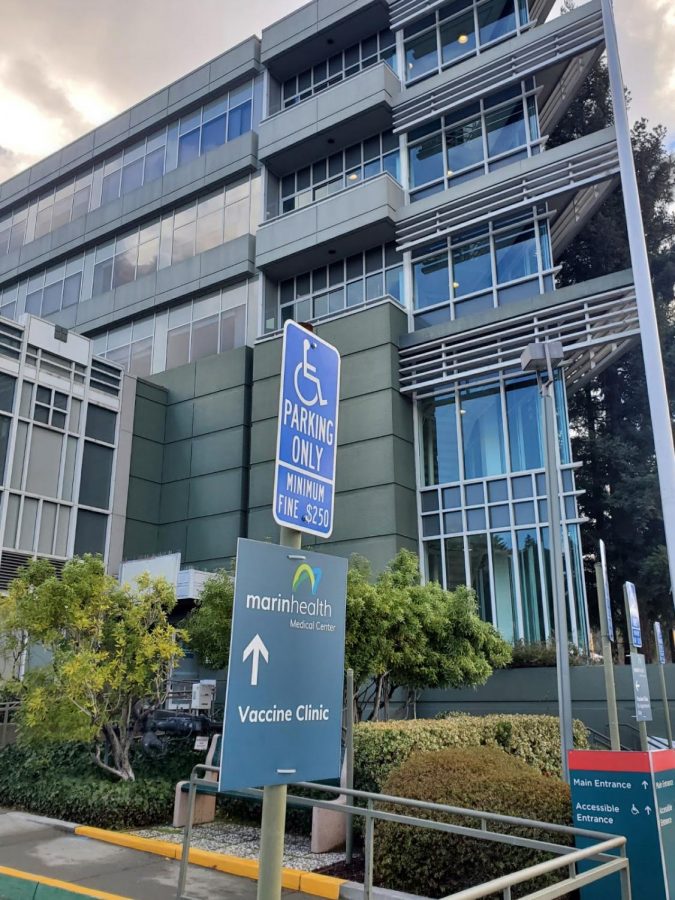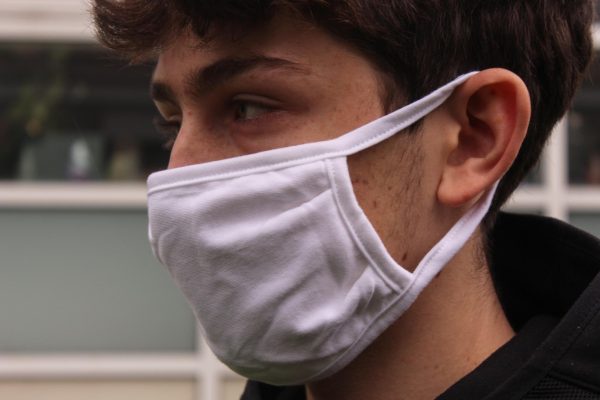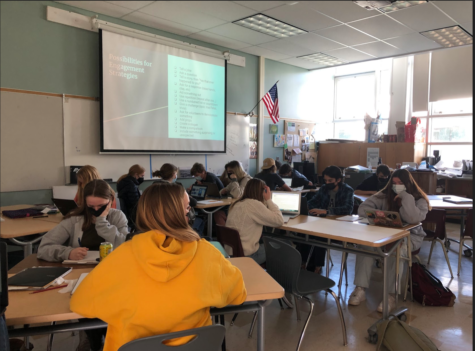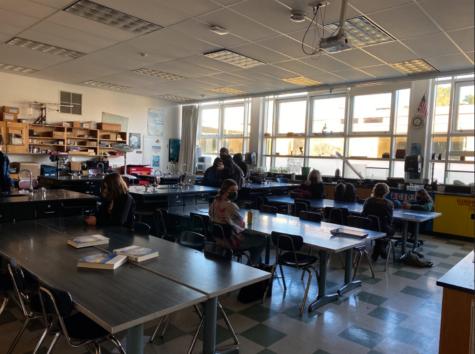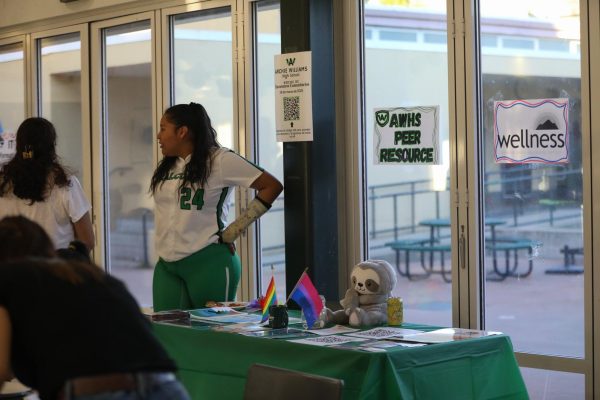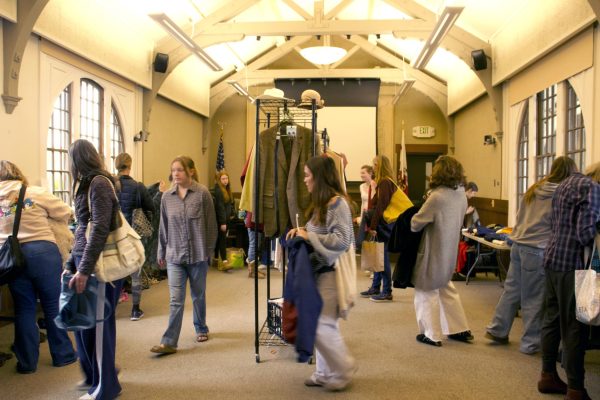Marin Health begins vaccine distribution, schools and local businesses expect to reopen
The front of the Vaccine Clinic at Marin Health on January 29, 2021.
The Marin Department of Health and Human Services has officially started the first stage of COVID-19 vaccinations, with the second stage expected to start early February. The first stage mainly focused on vaccinating essential workers and the elderly, while the second stage will focus on vaccinating teachers and any other education-related employees. The second stage will be much larger, reaching over 100,000 people in Marin.
“[The second tier] encompasses more than 100,000 people in Marin alone, but educators are in there, so all education-based employees or anyone who works in a school district or works affiliated with them will be able to get the vaccine hopefully in the next 4-6 weeks,” Tamalpais Union High School District (TUHSD) Superintendent Dr. Tara Taupier said.
The vaccine is primarily distributed by Marin Public Health. People can also make appointments via the Marin Public Health website to get vaccinated at Kaiser Permanente, Sutter Health, Marin Health, Veterans Administration, One Medical, CVS Pharmacy, and Walgreens.

As far as distributing the vaccine, TUHSD will schedule allotted time slots for each teacher to receive the vaccine depending on their role in the school.
At this point, it’s unclear when students can be vaccinated since the Pfizer vaccine is only approved for ages 16+ and the Moderna vaccine is only approved for 18+. Since students may not be able to be vaccinated until Marin Health progresses to the fourth tier and testing is limited, they will have to complete daily health screenings to attend in-person class as a precaution. Taupier urges students to be honest when screening in order to keep schools open.
“The idea is to just prevent someone who might have [COVID-19] from coming in and spreading it, and getting students to really reflect on how they feel,” Taupier said.
The vaccine has approximately a 95 percent efficiency rate, according to PhD and Head of Research at Invitae Vincent Fusaro, but he explained that efficiency and effectiveness are two different things.
“The effectiveness is how well the vaccine performs in the real world,” Fusaro said, “It’s typically less than the efficiency (~95 percent), but we don’t actually know the real effectiveness yet.”
No vaccine can be 100 percent effective, and effectiveness of the COVID-19 vaccine is yet to be determined because it has existed for so little time.
Experts do estimate that the vaccine will cover the new strains, but it’s not confirmed since the virus continues to mutate at a rapid pace. When around 100 million doses will have been distributed, projected to be in April 2020, experts hope we will have reached or at least progressed towards herd immunity. Herd immunity is the idea that once the majority of the population is vaccinated, the spread of COVID-19 will lessen dramatically, protecting those who aren’t vaccinated.
Fusaro predicts that we will have vaccinated enough people to drastically slow the spread by June 2021 and by next fall, the majority of people in the U.S. will be vaccinated. Though he assures us that there is not yet enough information to confirm these predictions.
The vaccine may help to open schools, libraries and other resources for students, along with creating a more interactive in-person classroom once teachers and other education-based workers are vaccinated. Even with the vaccine, however, students still must take precautions like wearing masks and social distancing.
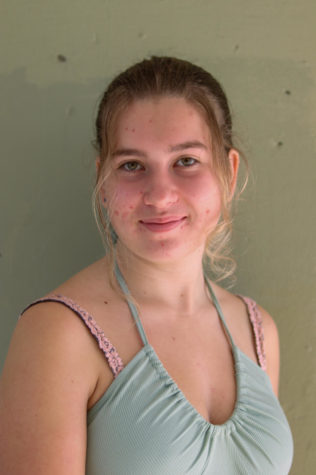
Genevieve is a junior, starting her second year in journalism. She enjoys reading, skiing, and watching movies from the 80’s. You can find her at home...


